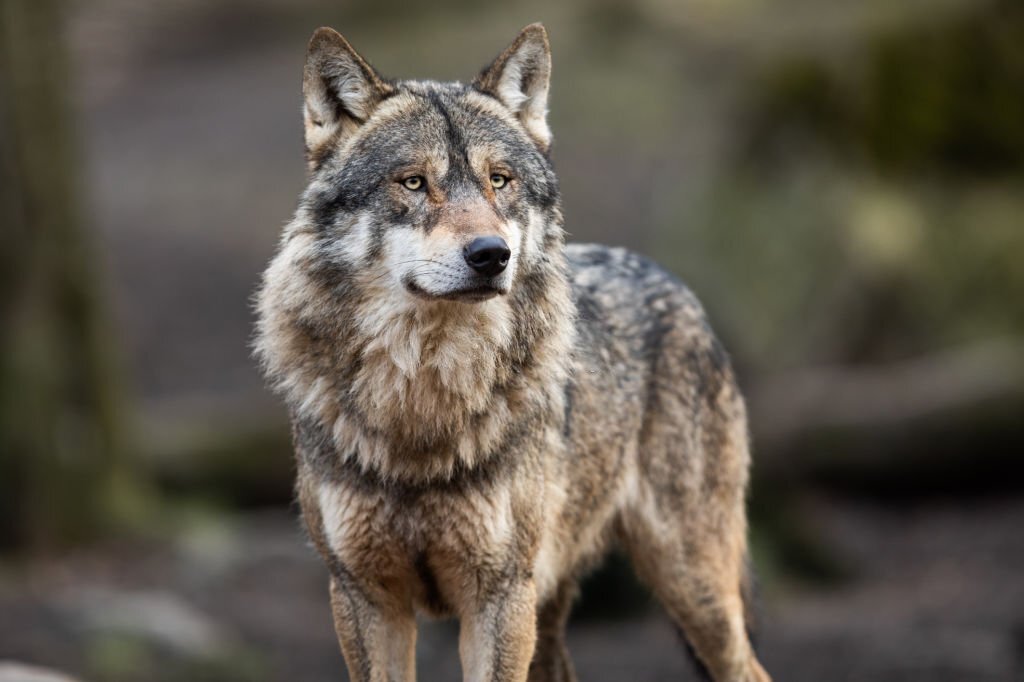Wolves have long been portrayed in movies, stories, and legends as massive beasts that tower over humans. But is there any truth to the idea that wolves are much bigger than people? Let’s take a detailed look at how wolf size compares to the average human.
Table of Contents
An Overview of Wolf Species and Sizes

There are multiple species of wolves found across North America, Europe, Asia, and the Middle East. Sizes can vary quite a bit between these different wolf species:
- The largest wolf is the Mackenzie Valley wolf found in Alaska and northwest Canada. These muscular hunters can reach over 6 feet long from head to tail and weigh between 120-175 pounds. One wolf caught in 1939 weighed a whopping 175 pounds!
- On the smaller side is the Arabian wolf which weighs around 45 pounds fully grown. That’s about the size of a medium dog breed like a Labrador Retriever.
- One of the most common and widespread species is the gray wolf. Adult males average 5-6.5 feet long and 80-100 pounds. Females average 4.5-6 feet in length.
Comparing Wolf and Human Anatomy
While height and weight offer simple size comparisons, looking at their anatomy reveals more striking differences:
- Wolves have larger, broader heads and snouts compared to humans. Their powerful jaws can deliver a crushing 1600 psi bite.
- Wolves have larger paws with claws and digitigrade legs suited for running and hunting. Humans have plantigrade legs better for walking long distances.
- A wolf’s senses of smell, hearing, and night vision far surpass a human’s capabilities. Their eyes reflect light for enhanced night vision.
These anatomical differences show while wolves are not necessarily “bigger” than humans, they have evolved as powerful hunters in ways humans have not.
How Wolf Height Compares to Humans
When it comes to height, wolves are definitely shorter than the average human adult:
- Wolves typically reach 26-33 inches at the shoulder when full grown.
- The average human male height is around 5’9″ (69 inches)
- Average female height is 5’4″ (64 inches)
- So even the largest wolves would only come up to about waist height on a man and chest height on a woman.
Wolves can stand on their hind legs, bringing their head height closer to a human’s. But even then, they only reach eye level with most people.
Wolf Weight vs. Human Weight

When it comes to weight, wolves are often half or less than the weight of an average human:
- Male wolves weigh 80-100 pounds on average
- The average man weighs around 195 pounds
- The average woman weighs 170 pounds
So a full grown wolf is usually about half the weight of a typical human adult. Only the very largest Mackenzie Valley wolves reach weights approaching that of a man.
Ancient Dire Wolves vs. Modern Gray Wolves
The extinct dire wolf species was larger than modern day gray wolves. Dire wolf remains show they could weigh up to 175 pounds.
However, even at 175 pounds the dire wolf was not drastically bigger than the largest modern wolves. They were still shorter than humans in terms of height. In weight they would have been similar to most human males and heavier than females. But they were not the towering beast over humans that fictional movies often portray.
For example, the dire wolf remains excavated from the La Brea Tar Pits showed a shoulder height of around 31 inches, similar to the modern gray wolf. Their massive skulls and jaws gave them a fearsome appearance, but they were not simply giant versions of today’s wolves.
Wolf Attacks on Humans are Extremely Rare
Despite their imposing teeth and strong jaws, wolves do not view humans as prey. Wolf attacks on people are extremely rare:
- There have only been 2 documented fatal wolf attacks in North America in the past 100 years.
- Wolves are usually wary of humans and avoid contact. Their natural instinct is to flee rather than fight when encountering a person.
- Other wildlife like bears, cougars, and coyotes are responsible for far more injuries to humans each year than wolves.
So while their size and powerful appearance may look intimidating, healthy wolves pose little threat to human safety. Their numbers are also small compared to other animals.
Key Takeaways on Wolf Size vs. Humans
- While wolves may seem huge, they are smaller than the average adult human in both height and weight.
- Only the very largest wolf species approach human size dimensions.
- Movies and stories routinely exaggerate wolf size, depicting them as enormous compared to people.
- But in reality, even large wolves do not tower over humans. Their size comparison is much closer than most would guess.
So while wolves are impressive predators, they are not the giant animals they are often made out to be. When it comes to size, wolves are much more similar to humans than legends would have you believe.
Hopefully this comparison gives you a better sense of real wolf sizes. Let me know if you have any other wolf size questions!
Related Post
Animals With No Legs: A Guide to Legless Species